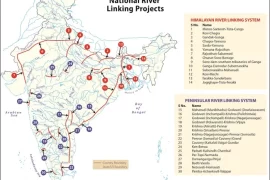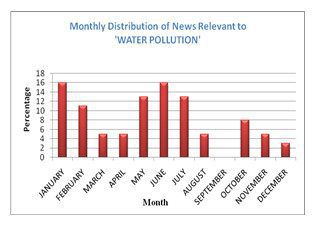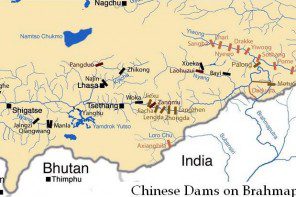Cooperation among the Himalayan river basin countries is needed to address the challenges; which have been created by rapid retreat of the Himalayan glaciers; in a coherent way to enhance the economic, security and strategic relations among the Himalayan river basin countries and also for managing water resources and water-related hazards in this region. Otherwise the situation will become worse as the frequency and amount of floods in the Himalayan region are expected to increase as a result of an increase in rainfall during the monsoon season and glacial retreat, both following from global warming. According to UNEP, this poses a challenge for reducing the vulnerability of the more than 1.3 billion people living in the major river basins downstream from the Hindu Kush-Himalayan region. Water availability in this area on per capita cubic meter basis is also estimated to decline numerously in near future. Only cooperation among the countries of this region can mitigate these problems.
Economic dimension of cooperation
The economic well being of the region is directly linked to equitable and just water sharing & management. It also has direct consequence on the poverty alleviation strategy of the countries of the Himalayan basin. Many international river basins have shown their interest to follow an approach of cooperation at the basin level. Such cooperation may include coordination of activities, sharing information, collaboration among the nations, developing adaptable plans, common action among the riparian countries, developing infrastructure facilities jointly and others alike. Although water will be the natural resource of main focus but such an environment may help us to think about cooperation and benefits beyond water resources as well.
Security Dimension of Cooperation
Water insecurity includes lack of access to adequate safe and drinking water, contamination & disease due to lack of safe water, arsenic contamination (50 microgram/liter, 5 times higher than WHO defined standard in Bangladesh), lack of water for irrigation & cultivation, navigation & transport, irregular discharge of water and so on. The principal potential benefits of cooperation in water resources can include sharing information for flood forecasting and early warning, storing water in upstream river basins for flood moderation, storing water resources for increasing flow in dry seasons and for inland water transport, harnessing water resources to generate hydroelectricity, managing watersheds to help increase the quality and quantity of water available for irrigation and drinking by the downstream users.
According to Strategic Foresight Group, it is expected that in the coming 20 years, the four countries in the Himalayan sub-region will face the depletion of almost 275 billion cubic meters (BCM) of annual renewable water. Although the industrial and domestic sectors will also need more water in the future the agricultural sector will continue to be the major consumer of water in China, Nepal, India and Bangladesh. Cooperation among the Himalayan river basin countries will lead the countries to reduce the problems that induce the food insecurity among the countries in such way. In the context of upstream-downstream linkages climate change has introduced a new dimension to the prospective benefits of cooperation. Climate change may lead to an increase in the frequency and magnitude of glacier lake outburst floods (GLOFs) and flood-related disasters. In recent decades the glaciers of the Himalayas, especially in the eastern and central regions, have been shrinking at an accelerated rate, although this drastic reduction in ice cover has not been observed in the northwestern Himalayas, Karakorum, Hindu-Kush, or Pamirs.
Strategic dimension of cooperation
If cooperation is not occurred properly then the strategic relations among the countries in this region will become apprehensive. Due to competition over expanding influence in Nepal, relations between India and China may become strained. If China decides to build a dam or diversion project at Great Bend over Yarlung Tsangpo then the situation will become worse. The bilateral relation between India and Bangladesh may become overwrought due to a decrease in flow of rivers from India to Bangladesh and increase in refugee flow from Bangladesh to India. In case of India-Nepal relations, plans of either party to build dams on their side of the border will create tension. Cooperation between China and India can help to enhance the strategic relations between China and India regarding Tibetan issue. It can lead to new external alliances, producing fresh alignments and polarization in Asia but it may fabricate ‘beggar thy neighbor’ politics, which can compromise the internal options of each country. A Regional Information Sharing Network in sub regional level by including Nepal and Bangladesh is needed to be established among the Himalayan River countries as many of the issues are interlinked across the four countries. Water transport can provide new connectivity, opportunities for trade and tourism and employment in the areas of Nepal, Southwest China and Northeast India as these areas are landlocked. Nepal can connect to India through waterways while India can link to its Northeastern states through Bangladesh. Being under the umbrella of a Himalayan Rivers Commission (HRC), collaboration on the management of the Ganges and Brahmaputra Rivers will enable all four countries to tap expertise that might not have been available under a nationally-driven framework. The basin-wide water development will also be facilitated by the establishment of consultative bodies working on different aspects of river management. To reduce uncertainty, well-equipped baseline stations, long-term monitoring, networking, open data exchange, and cooperation among all Himalayan river basin countries are needed. In facilitating knowledge generation, exchange, and cooperation with international mountain research programmes such as the Global Observation Research Initiative in Alpine Environments (GLORIA) and like the International Centre for Integrated Mountain Development can play a role.
Thus adaptive policies, hazard mapping and major efforts to repeal the human drivers of climate change have to be incorporated into all sectors like land use, water management, disaster management, energy consumption, and human health. It would help both decision-makers and local communities to enable them to anticipate or assess their flexibility to adapt future changes through proper planning and technical design by understanding the current situation. Consequently, the cooperation among the Himalayan River basin countries will help to remove the economic, security and strategic tensions among these countries.
Cooperation between China and India can lead to new external alliances, producing fresh alignments and polarization in Asia but it may fabricate ‘beggar thy neighbor’ politics.
The author is a Masters student in International Relations, University of Dhaka.







